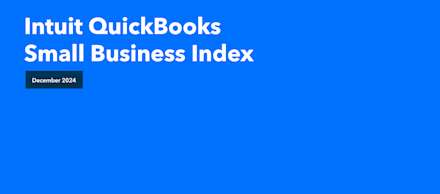
Intuit QuickBooks Small Business Index, December 2024
Simple, smart accounting software - no commitment, cancel anytime

INVOICING
Without an efficient and timely invoicing process, your business won’t be able to operate effectively. That’s why it’s so important that you understand the basics of invoicing and the important role it has in maintaining your cash flow.
In this guide, we’re going to explain what an invoice is, what it’s used for, the different types of invoice you can send and the details you should include.
Very simply put, an invoice is a formal payment request for goods and services that you have already provided or will provide in the future.
It should contain all the details the customer will need to make the payment, as well as an itemised list of the products or services provided and their cost.
An invoice also serves a secondary purpose. It’s an important document for tax purposes and should be kept as evidence of your income and (where relevant) the VAT you’ve collected on the government’s behalf.
An invoice serves several different purposes. Those include:
To request timely payment from customers
An invoice provides a formal record of a transaction and includes a due date that a customer’s payment should be made by. After that point, you’re legally entitled to charge interest on the overdue payment.
To keep track of sales
An invoice creates a written or electronic record of a sale being made. That helps businesses to protect themselves and is important for bookkeeping purposes.
To record business revenue for tax returns
Businesses must keep a copy of all invoices for tax purposes. They provide a summary of commercial transactions and help businesses to complete and file accurate tax returns.
To track inventory for businesses selling products
Invoices can be used to track items that have been sold. That can be helpful when it comes to managing and reordering stock.
Legal protection
Invoices also provide a legal record of a sale. That helps to protect small businesses from fraud and allows them to take action if a customer refuses to pay.
An invoice ID, also known as an invoice number, is a unique number that’s assigned to every invoice issued by your business. This is a crucial element of the invoice as it allows you to track and easily identify individual transactions with your clients.
According to the UK government, every commercial invoice you issue MUST include a unique invoice number. You should establish and use a consistent system to ensure no invoice number is used more than once.
Systems you can use to assign invoice numbers include:
Sequential - Start with any number, usually 1, and assign each proceeding invoice using the next number in the sequence. For example, invoice 001, invoice 002, etc.
Chronological - The chronological method is to assign invoice numbers based on the date the invoice is generated. You can then add a unique sequential number to differentiate invoices created on the same date. For example, an invoice issued on 30 January 2021 with the sequential number 03 would have an invoice number of 30012103.
By customer ID - If you assign unique ID numbers to your customers, they can be used on their invoices along with a sequential number. For example, a client with a customer ID number of 210 and a sequential number of 15 would be sent invoice 21015.
By project ID - It’s not unusual for businesses to assign unique ID numbers to each project. This can be combined with a sequential number to differentiate invoices issued for the same project. For example, the third invoice (03) you issue for project 232 would be invoice 23203.
A professional commercial invoice should be simple, clear and contain all the necessary information to be legally enforceable and for the customer to make a payment. It should include:
Your business’s contact information
Your client’s contact information
An invoice ID or invoice number
The payment term and due date
An itemised list of the products or services provided
The total amount due
Read our comprehensive guide on how to write an invoice to learn more.
A few additional tips when sending business-to-business (B2B) invoices include:
Always use the registered business name rather than the trading name of the company you’re dealing with if they’re different.
Ask the person you’ve been in contact with if there’s a specific individual or department you should send the invoice to.
Ask if there’s a purchase order number that you should include on the invoice. That can help to speed up invoice processing times.
This video tutorial will help you create professional customer invoices in QuickBooks in just a few clicks.
Invoices are most commonly sent to customers or clients after services or products have been provided. However, that can change depending on the type of business you operate and your relationship with the customer. Invoices can be issued:
In advance - If you have to buy raw materials to fulfil an order or require a deposit, you may invoice the customer before the work is done.
On the spot - Issuing an invoice as soon as the work is done is common in industries such as the trades and some professional services. This helps to ensure you receive prompt payment.
After you’ve completed the job - Some businesses allow 24-48 hours before invoicing to ensure their customers are happy with their work, while others invoice at the end of the month.
An outstanding invoice is one that’s been issued but hasn’t been paid yet. This is different to an overdue invoice, which hasn’t been paid by the due date. There are certain terms that relate to outstanding and overdue invoices. They include:
Deposit required - You can ask for a deposit or downpayment from the customer upfront before the goods or services are provided. That can help to protect you from cash flow issues if a payment is late.
Invoice due date - This is the date the payment should be made by and must be included on every invoice you issue. If payment hasn’t been received by the due date, you’re legally entitled to charge interest on the outstanding amount.
Early payment discounts - Some businesses try to encourage customers to make quick payments by offering discounts (typically 2-3%) if the invoice is paid in full within 7-14 days.
There are many different types of invoices that businesses can issue to their clients. The invoice you use will depend on the industry you operate in and the type of customers you have.
Type of invoice | Purpose |
|---|---|
Sales invoice | A sales invoice is the umbrella term for any invoice you send to your clients. Any invoice you receive is called a purchase invoice. |
Tax invoice | Any invoice that includes the VAT payable on a transaction can also be called a tax invoice. VAT-registered businesses send tax invoices. |
Interim invoice | If you work on a large project for a client, you may send an invoice for each milestone reached. This is called an interim invoice. |
Final invoice | This invoice signifies the end of a project and is issued after at least one interim invoice has been sent. |
Recurring invoice | If you charge a customer the same amount every week or month, you can send a recurring invoice. Recurring invoices are commonly used for subscriptions and leases. You can collect regular payments automatically from your customers using Direct Debit. QuickBooks makes it easy to do this using GoCardless. |
Proforma invoice | This invoice provides an accurate estimate of the value of goods so an importer can calculate the customs costs. It’s not a payment request. |
Credit note | This reverses a charge from a previous invoice and is commonly used when a customer has been overcharged or goods are faulty. |
In theory, invoicing is a very simple process that shouldn’t cause businesses too many problems. The invoicing process is as follows:
Your customer agrees to purchase goods or services from you
You complete the transaction and provide the goods or services as requested
You create an invoice that includes the details of the transaction and amount due, and send it to the customer
Your customer processes the invoice and arranges to make the payment by the due date.
The due date arrives and the payment is made in full.
Unfortunately, the process doesn’t always go quite so smoothly. Finding the time to invoice, getting clients to make payments on time and chasing them when they don’t can be some of the most frustrating aspects of running a business. That’s where our invoicing software can help.
With QuickBooks’ invoicing software, you can create professional and personal invoices using customisable templates, track payments in real time, send automatic reminders and give your customers more ways to pay. That makes invoices and payments easy to send, manage and accept so you can concentrate on other things - like running your business.
Invoicing and more made easy
We hope this blog post on understanding invoices has been helpful. Want to learn more about how to make your small business shine? Check out our blog for more useful posts.
9.00am - 5.30pm Monday - Thursday
9.00am - 4.30pm Friday